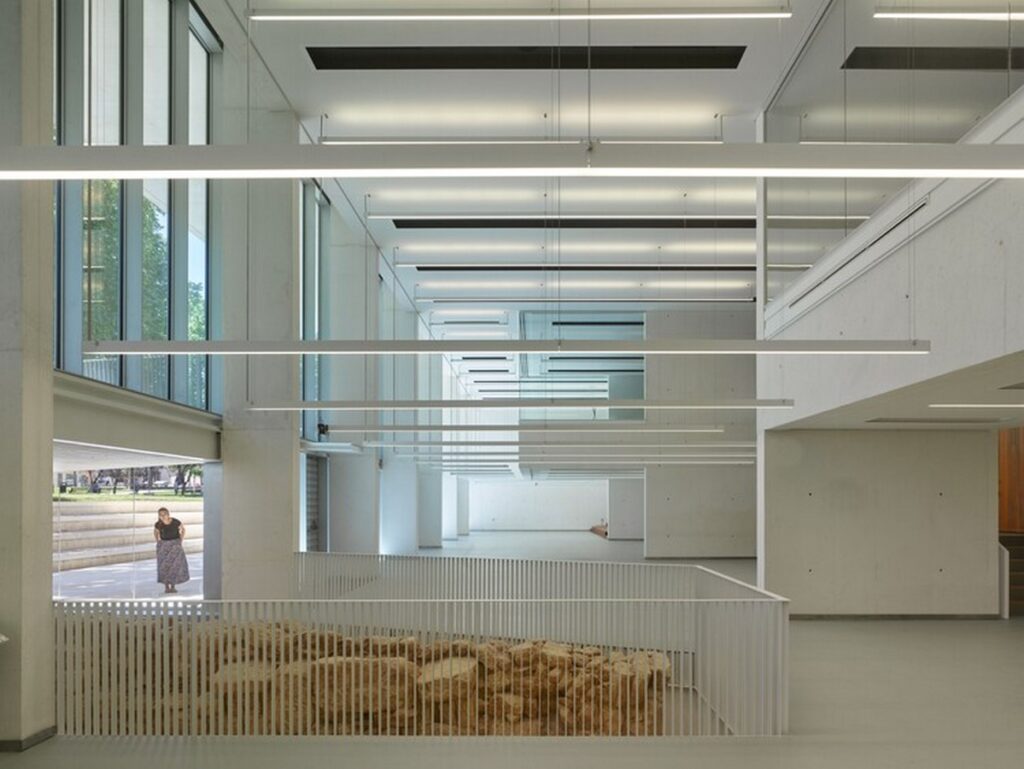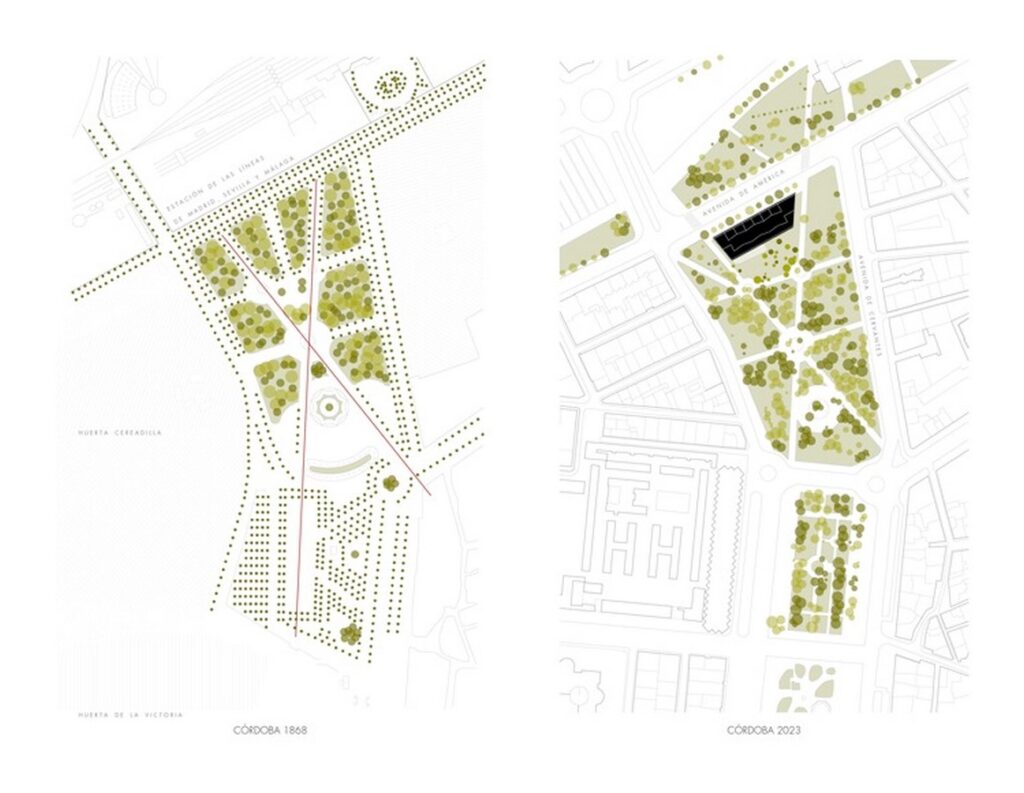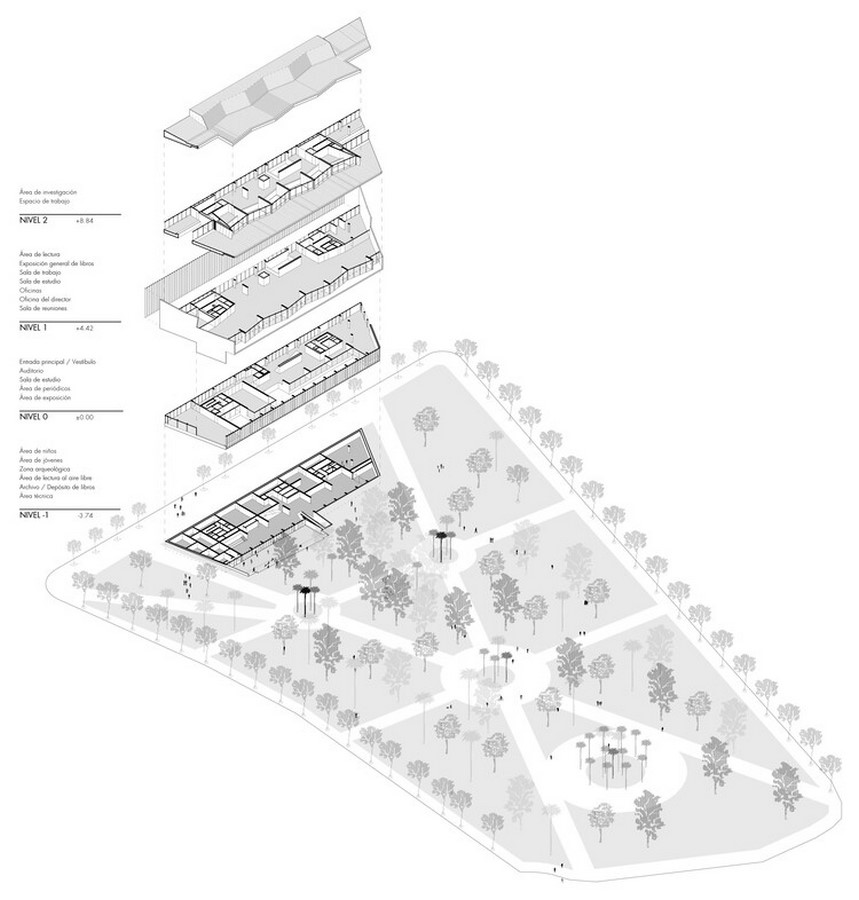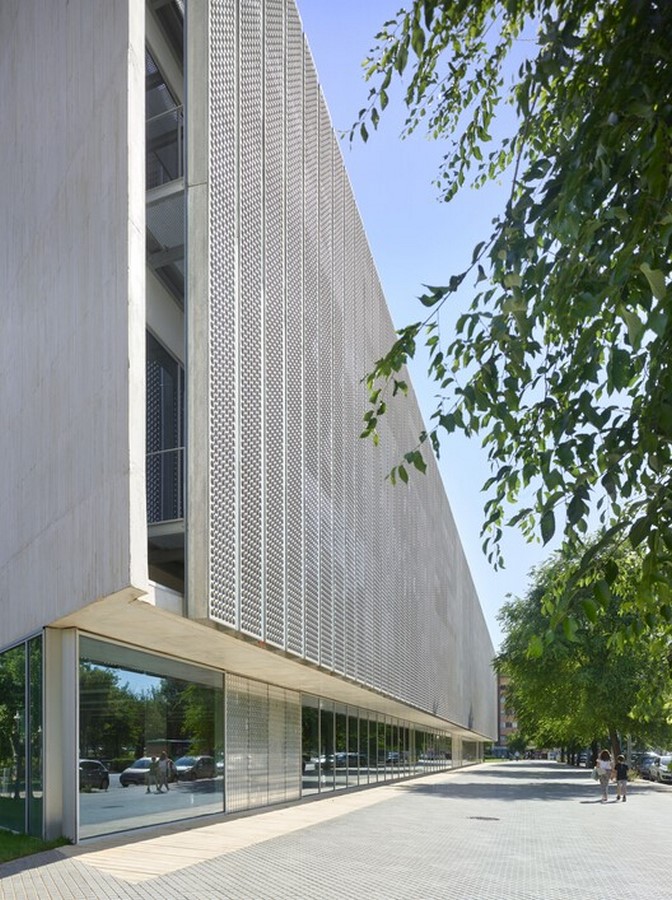
The Library in Córdoba, Spain, designed by Paredes Pedrosa Arquitectos, stands as a testament to architectural innovation and integration within its surroundings. With an area spanning 7193 m² and completion in 2021, this architectural marvel seamlessly blends modern design with historical context.
Architectural Concept
The Library’s strategic location in Jardines de la Agricultura showcases thoughtful planning to accommodate the surrounding urban landscape. Embracing the elevation difference between the expansive urban park and the adjacent Avenue, the library’s trapezoidal plan mirrors the layout of 18th-century gardens. This design not only respects existing greenery but also offers visitors a unique perspective, with a cantilevered balcony providing views of the lush treetops.

Integration with Nature
A hallmark of the Library’s design is its harmonious integration with nature. By extending towards the gardens, the library blurs the boundary between indoor and outdoor spaces. This seamless transition encourages patrons to immerse themselves in reading amidst the tranquil surroundings, fostering a deep connection between literature and nature.
Façade and Functionality
On the urban-facing side, the library’s façade serves as both a protective barrier and a symbolic representation of the institution. A meticulously crafted lattice of modular cast aluminum pieces not only filters urban noise but also unifies views and regulates light intake. This innovative façade design reflects the library’s commitment to sustainability and user comfort.

Interior Design and Amenities
Internally, the Library offers a diverse range of spaces to cater to various needs. From study rooms and multipurpose areas to dedicated reading zones, every aspect is meticulously designed to enhance the user experience. Skylights adorned with perforated aluminum panels not only illuminate the interiors but also aid in sound absorption, creating a conducive environment for reading and study.

Cultural Significance
Beyond its architectural brilliance, the Library holds cultural significance, paying homage to Córdoba’s rich history. Elements like the amphitheater, adorned with local “chino cordobés” pavement, serve as reminders of the city’s heritage. Moreover, the incorporation of a SX caliphal wall in the children’s area underscores the library’s commitment to preserving and celebrating its cultural roots.
Conclusion
In essence, the Library in Córdoba stands as a beacon of architectural excellence and cultural preservation. Through its innovative design, seamless integration with nature, and commitment to fostering learning and community engagement, it sets a precedent for modern libraries worldwide. As a testament to the enduring synergy between architecture and its environment, this architectural masterpiece continues to inspire and captivate visitors from near and far.























